January 05, 2024
Top 13 Famous Traditional Dishes of Ayodhya You Must Not Miss
CM Content Team


View all
140+
Resorts
January 05, 2024
CM Content Team
Trying the famous food of Ayodhya while being present in the pure environment of the city is a heavenly experience. Ayodhya is known globally as the birthplace of Lord Ram, the seventh incarnation of Lord Vishnu according to Hindu belief. The city is mentioned in the ancient Hindu epic, the Ramayana, as the capital of the Kosala Kingdom ruled by King Dasharatha, the father of Lord Ram.
Ayodhya is not just a destination, it is a divine experience. It attracts pilgrims and devotees from across India, especially during festivals and religious occasions and the city is home to several important temples. Even global tourists are curious to know how to reach Ayodhya or which are the places to visit in Ayodhya.
Recently the city has gained more focus due to the Ram Mandir being built in Ayodhya on the site of Ram Janmabhoomi. But, even before that, the devotion towards Lord Ram and the other elements of the city has kept people coming for ages. One of these elements is the authentic food of Ayodhya.
Let’s take a look at some of the famous traditional food in Ayodhya:
The food culture in Ayodhya is deeply intertwined with its rich cultural and religious heritage. As one of the seven sacred cities in Hinduism, Ayodhya holds immense divine significance as the birthplace of Lord Ram. The city's cultural and religious tapestry influences the dishes in Ayodhya.
The traditional dishes of Ayodhya are vegetarian due to its Hindu majority and respect for Lord Ram's non-violence teachings. The city also follows Sattvic food principles, focusing on pure, spiritual growth-promoting ingredients. Festivals feature special dishes, and blessed food (prasad) is shared during religious practices.
Ayodhya's culinary traditions include slow cooking and hand grinding. Its food promotes unity, with communal dining events fostering inclusivity and equality among residents of different backgrounds.
Let’s explore some of the best food in Ayodhya in details.

Kheer, a luscious rice pudding, graces Ayodhya's dessert tables during festivals. Made with rice, milk, and sugar and infused with cardamom and saffron, this sweet treat is an authentic food of Ayodhya. It not only satisfies the palate but also honours the significance of dairy in the city's culinary traditions, adding a touch of sweetness to celebratory occasions.

This is a famous food of Ayodhya and is a popular breakfast dish. It is a deep-fried bread made of wheat flour and stuffed with a spiced lentil mixture. The lentil mixture is prepared with soaked and ground urad or moong dal, combined with spices like cumin seeds, fennel seeds, asafoetida, and red chilli powder. Bedai Poori is often enjoyed with aloo sabzi, a spicy potato curry, and sometimes accompanied by yoghurt or raita. The combination of the crispy Bedai poori and the flavourful aloo sabzi provides a delectable balance of taste and texture, making it a favourite among locals and visitors alike.
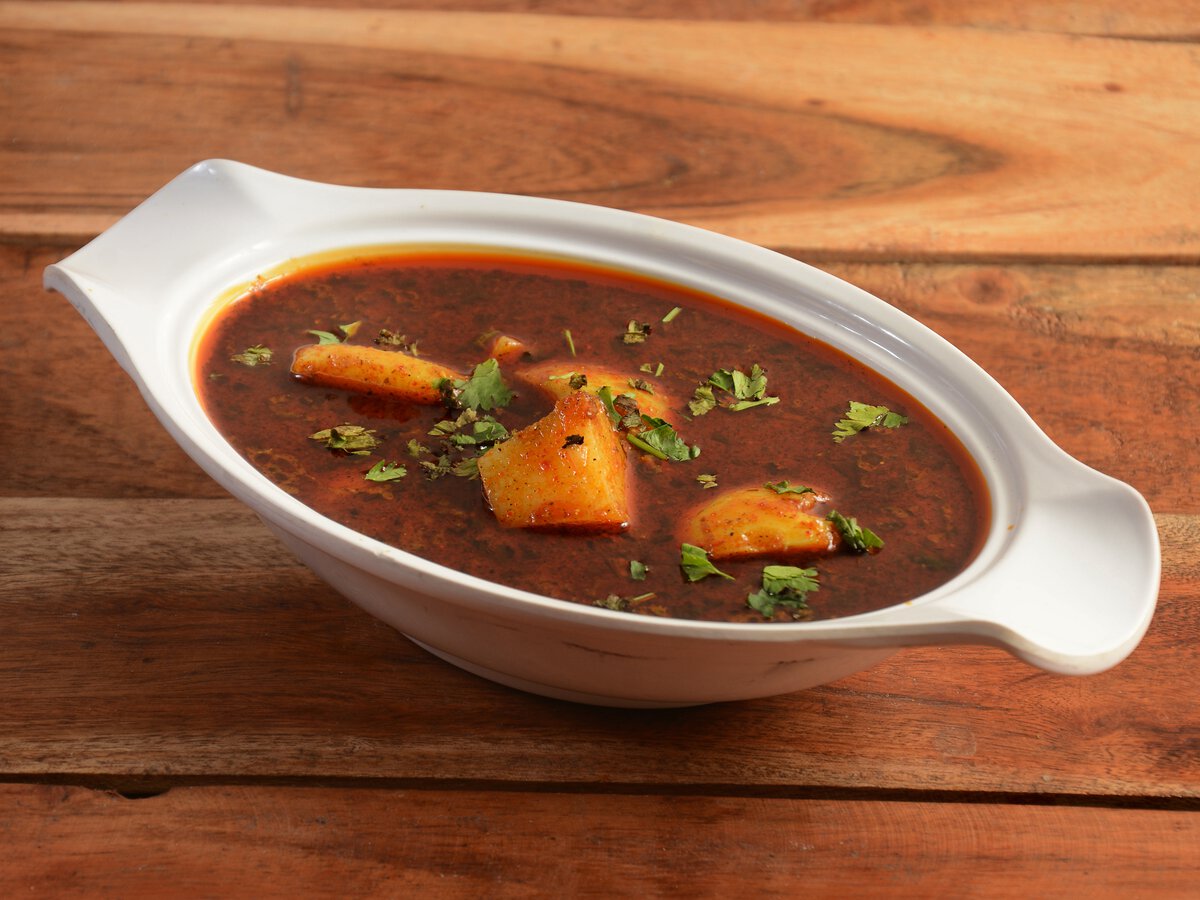
Aloo Sabzi is one of the traditional dishes in Ayodhya. It is made with boiled potatoes, cooked in a rich tomato gravy, spiced with turmeric, cumin, coriander, and red chilli powder. A touch of amchur (dried mango powder) or tamarind paste adds a tangy twist to the dish. Aloo Sabzi is typically enjoyed with bedai poori or kachori, making it a popular breakfast or brunch option. During festivals like Ram Navami, Diwali, and other religious events, Aloo Sabzi is often prepared as a part of the 'prasad,' which is an offering made to the deity.
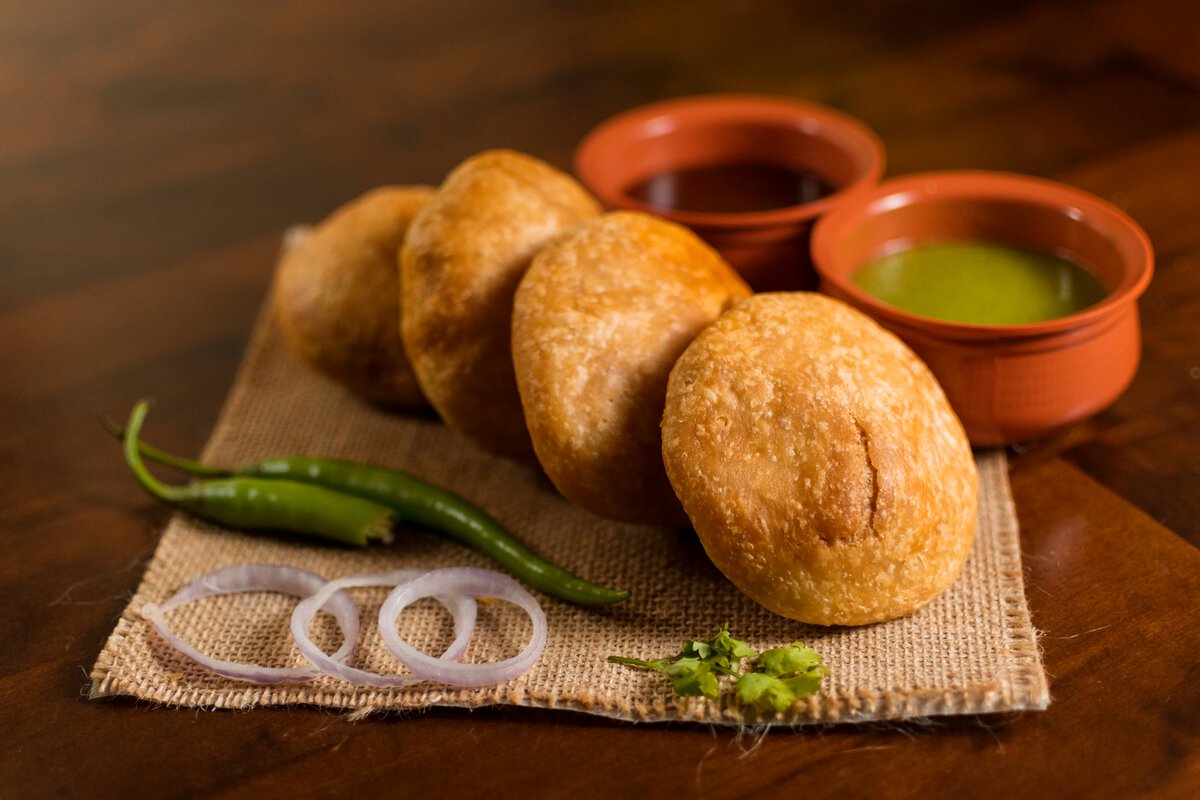
Kachori is a popular deep-fried food of Ayodhya, known for its crispy texture and spicy filling. It is often served with mint or tamarind chutney, providing a contrast of flavours between the spicy filling and the tangy and refreshing chutney. Kachori reflects the rich and diverse flavours of Ayodhya's cuisine and, hence, is an important part of its cultural traditions. It is a beloved snack enjoyed during celebrations or just because it is delicious.
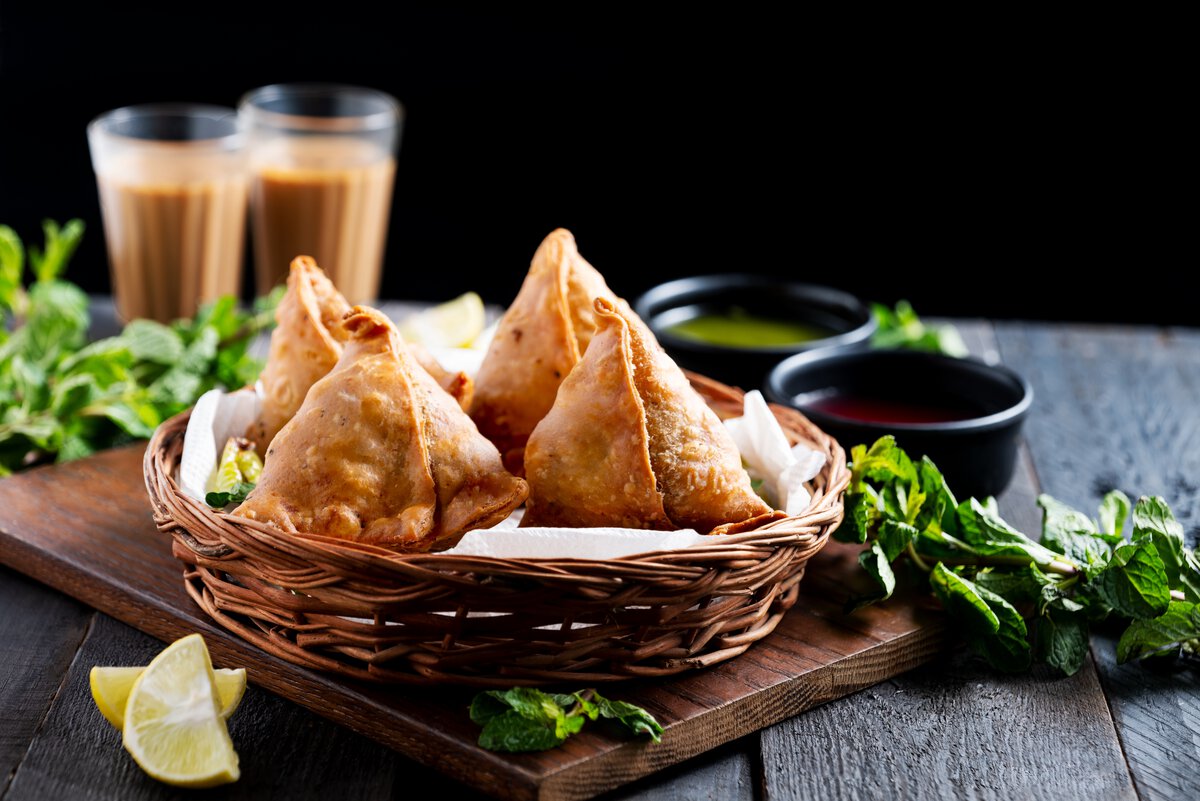
Samosa is one of the best dishes in Ayodhya, just as it is loved across the country. It is made with a crispy pastry filled with a spiced potato and pea mixture. The pastry is made of all-purpose flour and shaped into a triangle or a cone, which is then filled with the potato mixture and deep-fried until golden brown. The widespread appeal of samosas in Ayodhya stems from their versatility as a snack, suitable for any time of day. Found in numerous street food stalls, restaurants, and sweet shops across the city, samosas are a readily available treat. Particularly during festivals such as Diwali, Holi, and other religious events, samosas become a staple, enjoyed as part of the joyous celebrations.
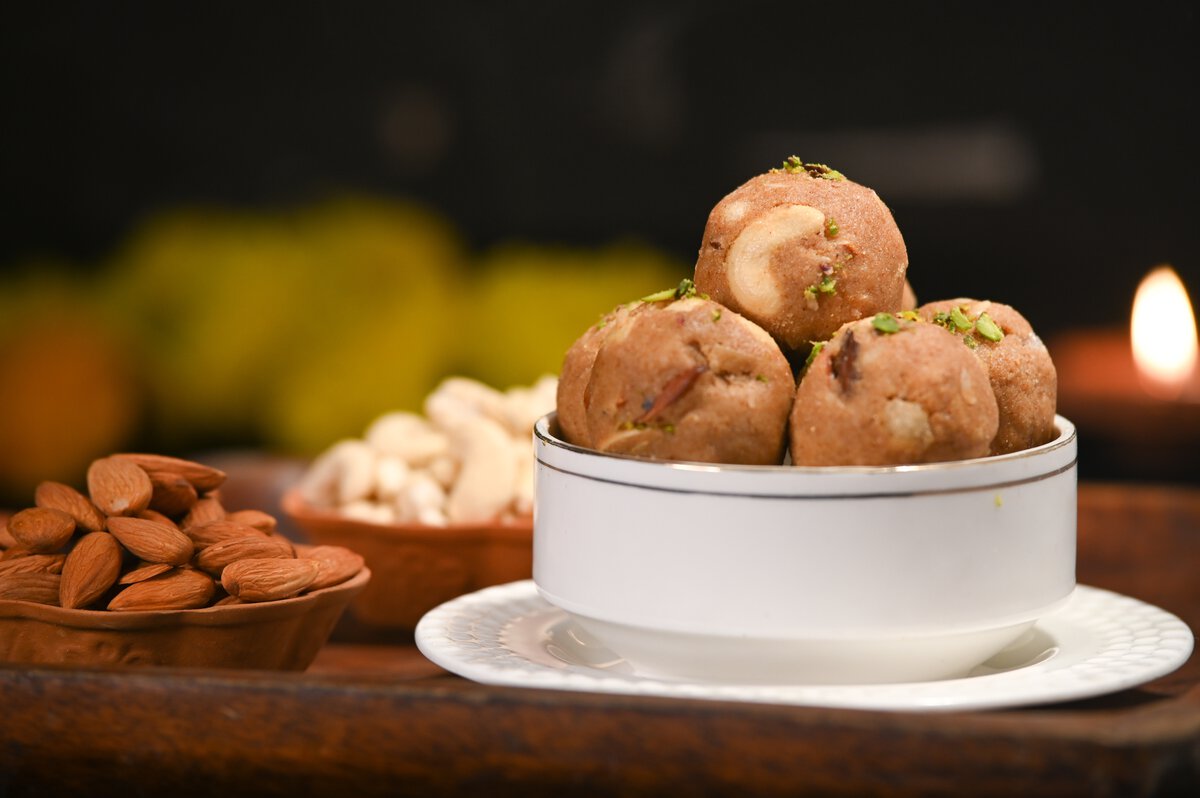
Ladoos hold significant cultural importance and are often associated with celebrations, festivals, and religious events. You can find many ladoo variations in the holy city, such as Besan Ladoo, Boondi Ladoo, Motichoor Ladoo or Atta Ladoo. The taste and texture of each ladoo is unique. It's given as a special offering, called 'prasad,' to Gods during religious rituals. After the ceremonies, this blessed food is shared among devotees, symbolising divine blessings and grace.
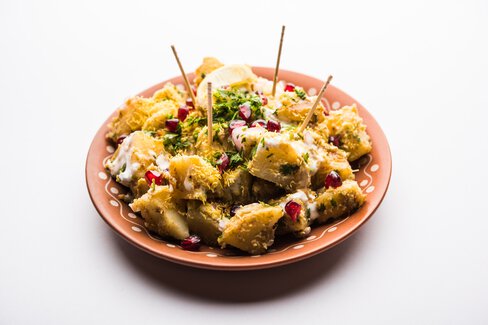
Chaat is a famous food of Ayodhya. It is a street food and a savoury snack that combines a variety of flavours and textures. In Ayodhya, chaat is enjoyed by locals and tourists alike for its delicious taste and satisfying crunch. Chaat typically includes ingredients like fried dough, potatoes, chickpeas, yoghurt, tamarind chutney, green chutney, and a blend of spices. Aloo Tikki Chaat, Papdi Chaat, Dahi Bhalla, and Golgappa are some of the most popular types of chaat in the region. Ayodhya's chaat offerings provide a tantalising taste of the city's culinary heritage, offering a burst of spicy, tangy, and sweet flavours in each bite.
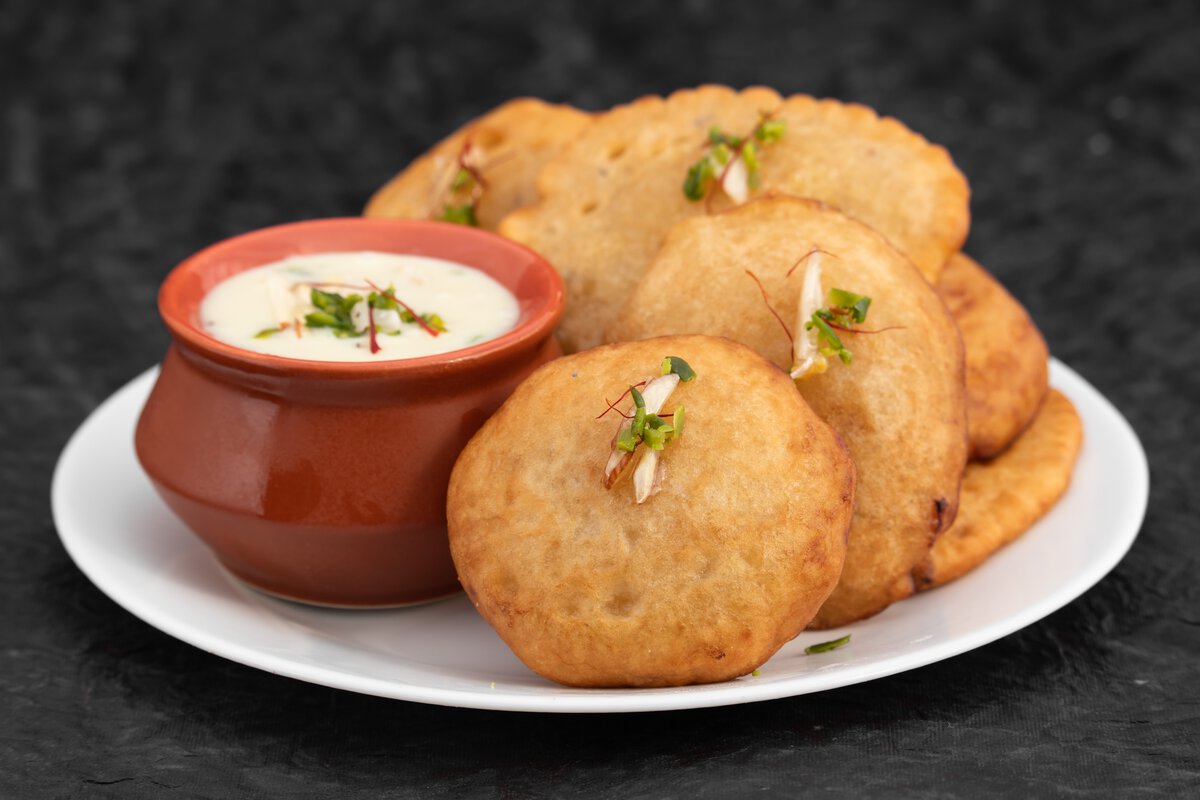
Malpua is a traditional Indian dessert popular in Ayodhya. This pancake-like sweet is made from a batter of flour, milk, and sugar, which is deep-fried and soaked in sugar syrup. Flavourings like cardamom or fennel seeds are often added, and the dish is typically served with rabri or garnished with nuts. Malpuas are particularly enjoyed during the festival of Holi and other celebrations in Ayodhya. The dessert's popularity in the city showcases the region's love for indulgent sweets and rich culinary customs. As part of Ayodhya's diverse food landscape, malpua is a must-try delicacy for those looking to experience authentic Indian cuisine.
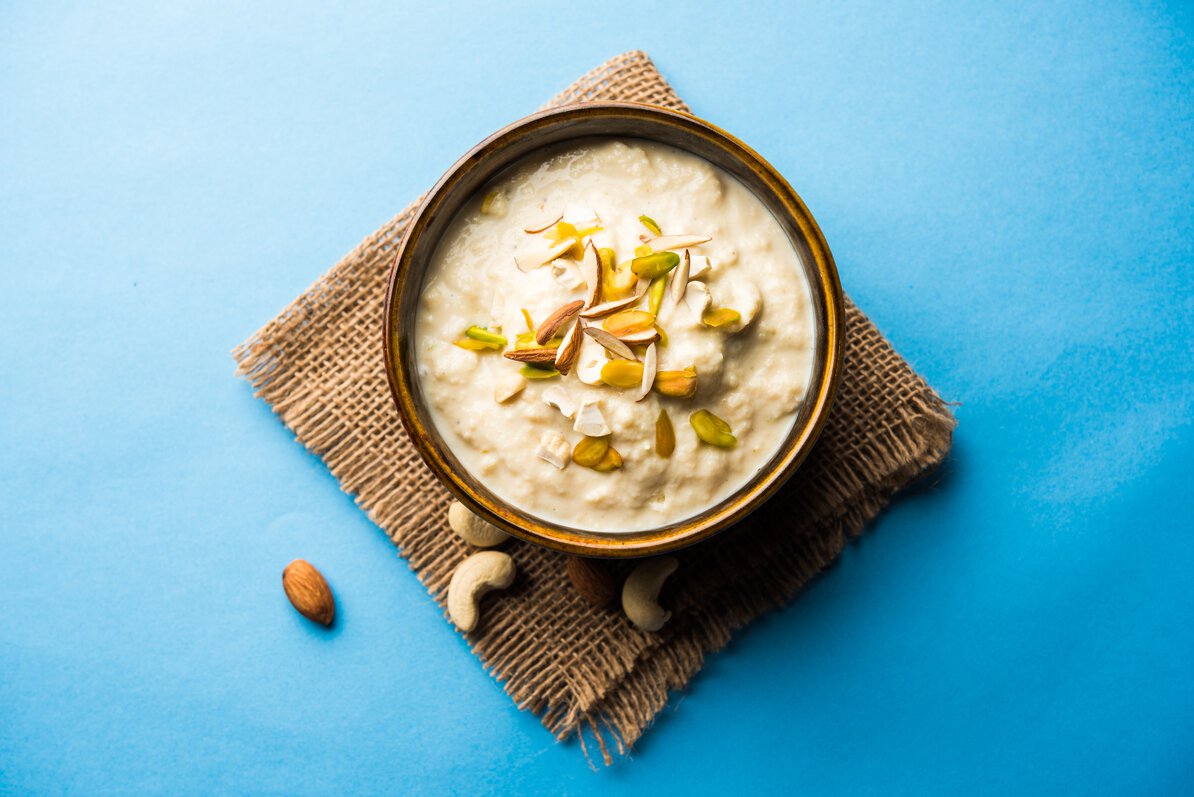
Another sweet delight, Rabri is one of the traditional dishes of Ayodhya. It is crafted by slowly thickening and reducing milk. This process creates a creamy texture, with milk solids stirred back in for a unique consistency. Enhanced with saffron and cardamom, and adorned with chopped nuts, rabri offers a rich, flavourful experience. Enjoyed solo or paired with sweets like malpua or jalebi, rabri showcases the region's passion for indulgent treats. Local cooks in Ayodhya skilfully craft this dessert. Getting the blessings of Lord Ram and then relishing delicious Rabri is such a fulfilling experience.
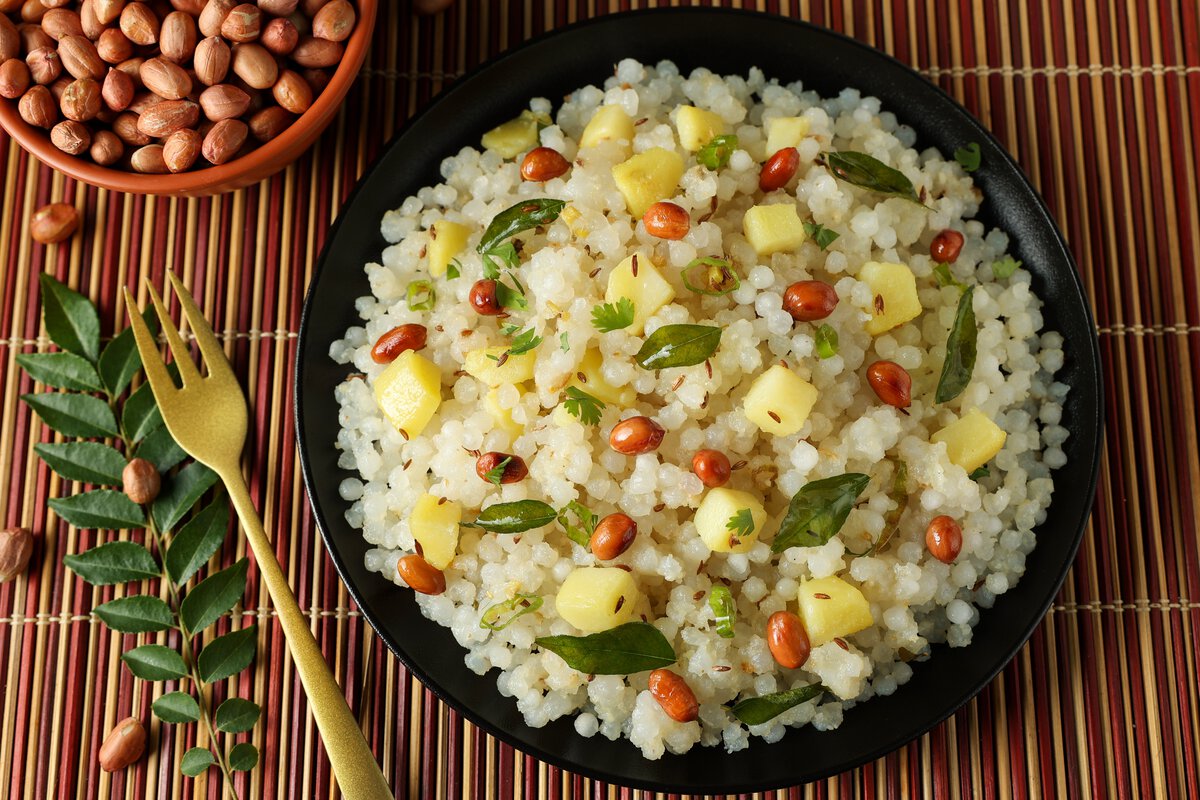
This is a popular fasting dish in Ayodhya and features tapioca pearls, diced potatoes, ground peanuts, and spices. Soak sabudana, sauté potatoes with cumin seeds, green chillies, and peanuts, then add drained sabudana. Cook until translucent, garnish with coriander, and serve hot with lemon. Enjoyed during religious fasts and as a breakfast or snack, it is one of the best foods in Ayodhya you can try.
These lentil dumplings are fried to golden perfection, boasting a crispy exterior and a soft, fluffy interior. Accompanied by tangy tamarind chutney and a dash of chaat masala, they make for a snack fit for kings and queens.
Indulge your sweet cravings with Malaiyyo, a delightful dessert unique to Ayodhya. This heavenly blend of milk, saffron, and cardamom creates a frothy treat that simply melts in your mouth, leaving you in a state of pure delight.
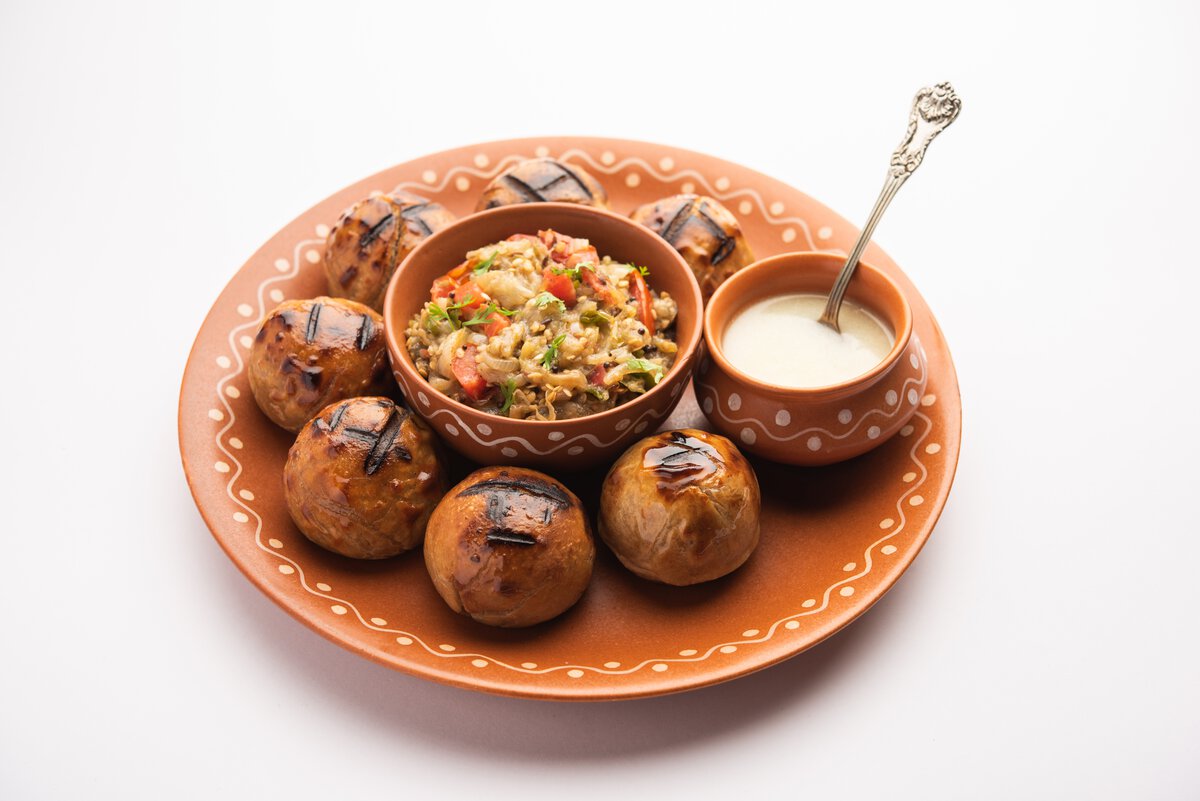
Take a flavorful journey with Litti Chokha, a traditional dish originating from North India. These wheat flour dumplings are filled with roasted gram flour and served alongside mashed vegetables, offering a symphony of flavors reminiscent of the rustic charm of Ayodhya.
The above list will help you cover some of the best food in Ayodhya so you won't miss out on the city's culinary excellence. While you are enjoying the amazing dishes in Ayodhya, do remember to experience its heritage as well.
Mahindra Holidays & Resorts India Ltd. (MHRIL), a part of Leisure and Hospitality sector of the Mahindra Group, offers quality family holidays primarily through vacation ownership memberships and brings to the industry values such as reliability, trust and customer satisfaction. Started in 1996, the company's flagship brand ‘Club Mahindra’, today has over 300,000 members , who can holiday at 140+ resorts in India and abroad.
We use cookies to personalise content and to provide you with an improved user experience.By Continuing to browse this site you consent to the use of cookies.Please visit our cookie policy for further details.

Welcome to ClubMahindra.com In order to provide a personalised experience for you, we use cookies to enable some website functionality. Cookies help us see which articles most interest you; allow you to easily share articles on social media channels; permit us to deliver content personalised to your interests and locations; along with many other site benefits. For more information, please review our Cookie Policy
When you visit any website, it may store or retrieve information on your browser, mostly in the form of cookies. This information might be about you, your preferences or your device and is mostly used to make the site work as you expect it to. The information does not usually directly identify you, but it can give you a more personalized web experience. Because we respect your right to privacy, you can choose not to allow some types of cookies. Click on the different category headings to find out more and change our default settings. However, blocking some types of cookies may impact your experience of the site and the services we are able to offer.
Because we respect your right to privacy, you can choose not to allow some types of cookies and you have the right to withdraw your consent by send a mail to email id [email protected]
These cookies are essential in order to enable you to move around the site and use its features, such as accessing secure areas of the site. Without these cookies, services you have asked for cannot be provided.
These cookies allow us to employ data analytics so we can measure and improve the performance of our site and provide more relevant content to you. These cookies don't collect information that identifies a visitor down to an individual level that is available to us. These cookies are not passing personally identifiable information to any external third party other than in limited cases when we engage a service provider to act on our behalf but who is then unable to use the data for their own purposes.
Performance cookies are generally third-party cookies from vendors we work with or who work on our behalf that collect information about your visit and use of the Club Mahindra website, for instance which pages you visit the most often, and if you get error messages from web pages. These cookies don't collect information that identifies a visitor. All information these cookies collect is anonymous and is only used to improve your overall experience on how the website works. Third party vendors may have access to this data and may use it to improve their overall services and offerings.
Functionality cookies allow a site to remember choices you make (such as your user name, language or the region you are in) and provide more enhanced, personal features. These cookies cannot track your browsing activity on other websites. They don't gather any information about you that could be used for advertising or remembering where you've been on the Internet outside our site.
Third-party advertising and social media cookies are used to (1) deliver advertisements more relevant to you and your interests; (2) limit the number of times you see an advertisement; (3) help measure the effectiveness of the advertising campaign; and (4) understand people's behaviour after they view an advertisement. They are usually placed on behalf of advertising networks with the site operator's permission. They remember that you have visited a site and quite often they will be linked to site functionality provided by the other organization. This may impact the content and messages you see on other websites you visit. If you do not allow these cookies you may not be able to use or see certain these sharing tools content on our website.